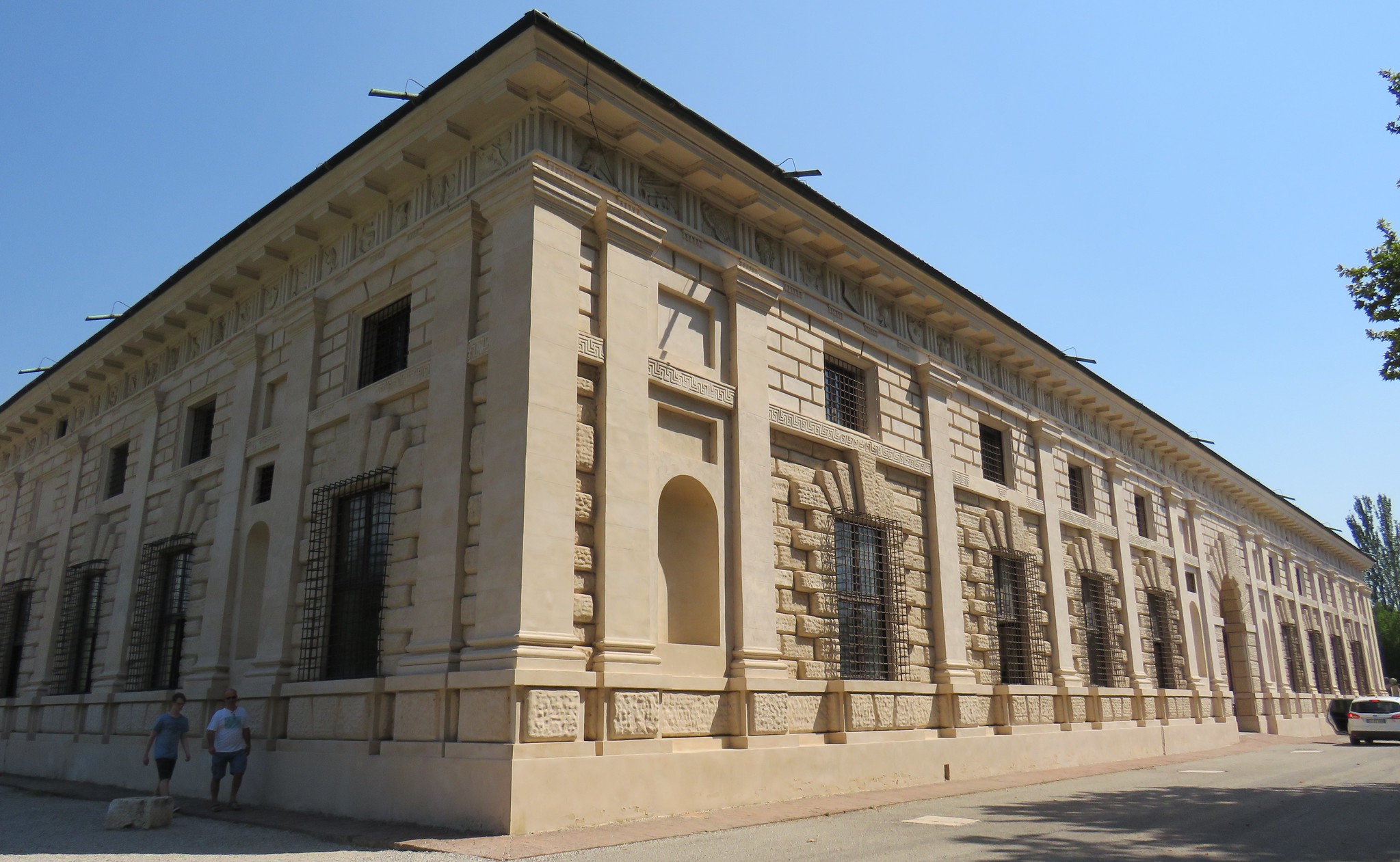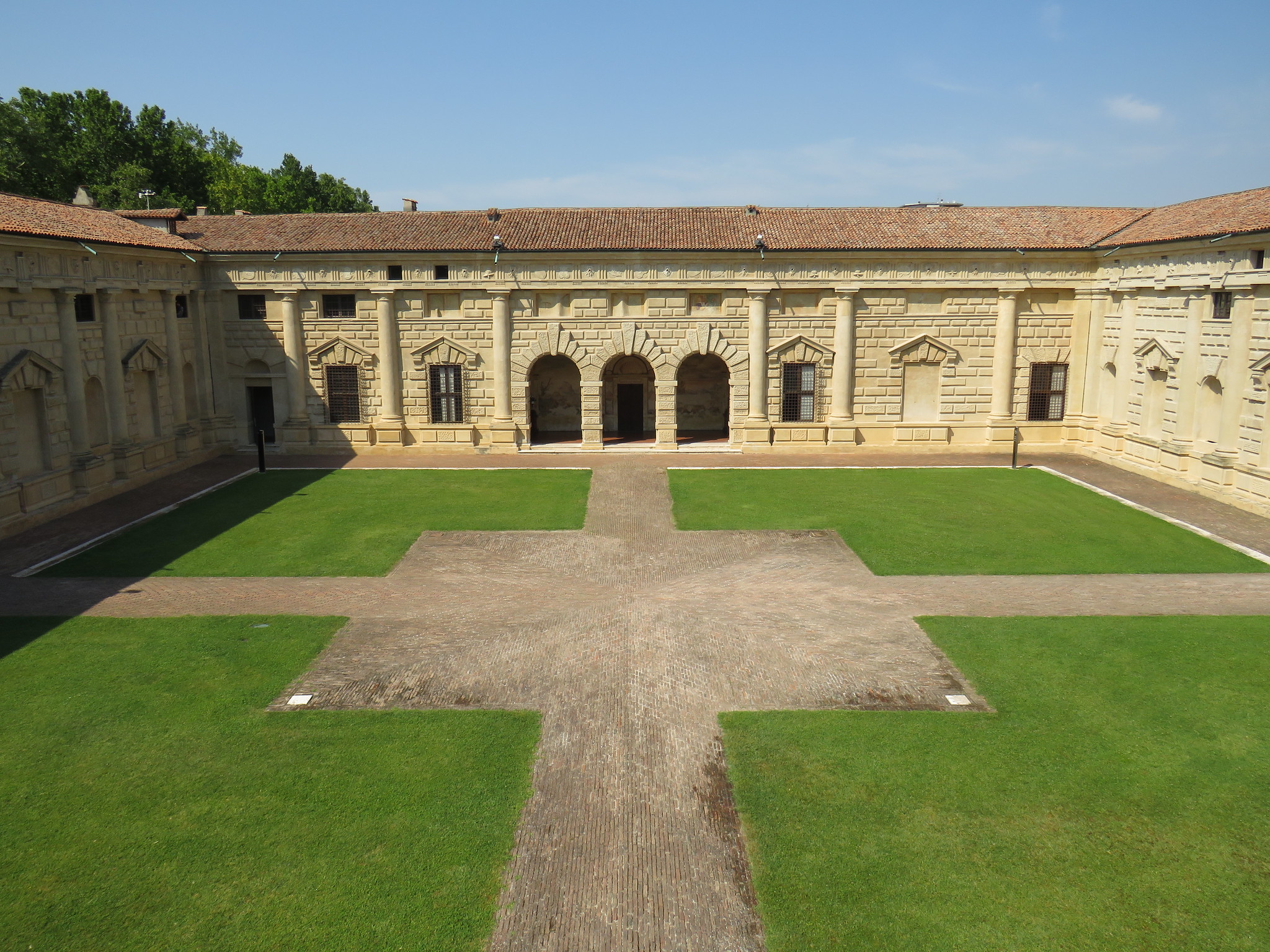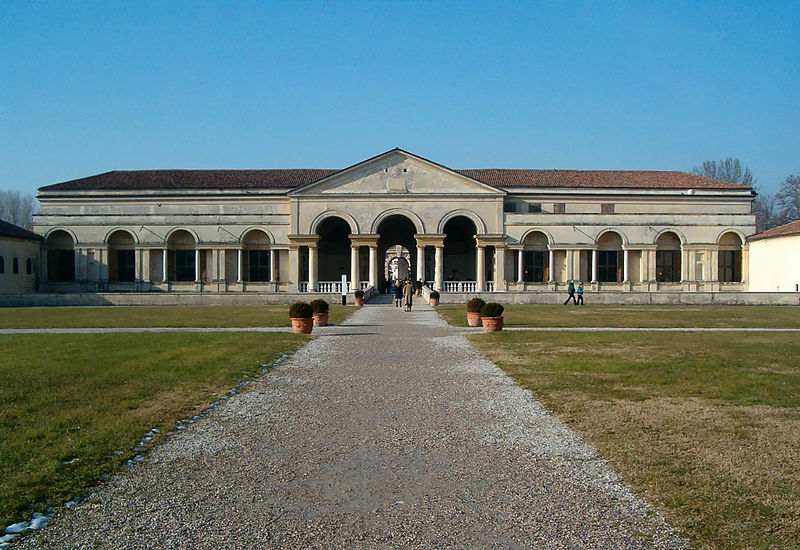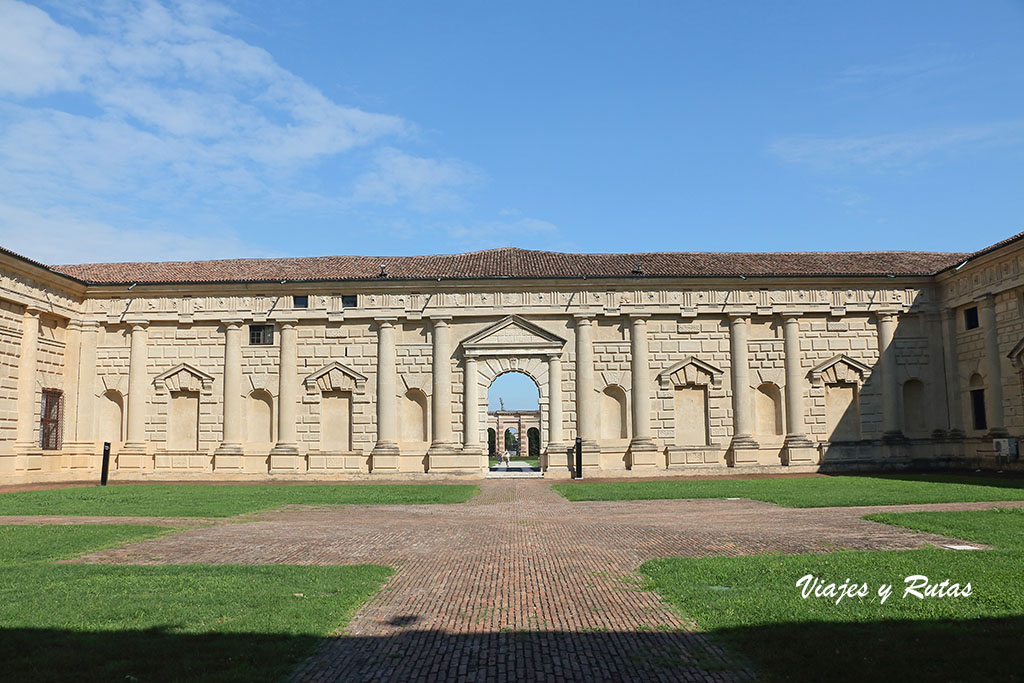
Palazzo Te, Mantua
El Palacio del Té de Mantua: honesto ocio renacentista 5 Ago 2021 | JAAC ¿Qué hacía el gran señor de una ciudad-estado de lo que hoy es el norte de Italia para relajarse? Se construía un palacio para el "honesto ocio". Así, como suena, un palacio exclusivamente para relajarse, para darse un capricho, para disfrutar de la vida…

Giulio Romano Palazzo del Te (Mantua) Palazzi, Architettura, Villa
El Palacio del Te es una maravillosa obra renacentista de mediados del siglo XV, que fue construida en una pequeña isla a las afueras de la ciudad de Mantua (Mantova) al norte de Italia. Esta isla, conectada por un puente, se convirtió en un lugar de ocio para la familia Gonzaga.

SEÑOR DEL BIOMBO GIULIO ROMANO EN MANTUA (1) EL PALACIO DEL TE
Mantua, Italy. Palazzo del Te is a palace in the suburbs of Mantua. It is a fine example of the mannerist style of architecture, and the acknowledged masterpiece of Giulio Romano. It was constructed 1524-34 for Federico II Gonzaga, Marquess of Mantua as a palace of leisure. The site chosen was that of the family's stables at Isola Del Te, on.

SEÑOR DEL BIOMBO GIULIO ROMANO EN MANTUA (1) EL PALACIO DEL TE
P alazzo Te in Mantua is a square building with a large internal courtyard, reminiscent of an antique rustic villa, with decorations inspired by antiquity.. Even the atrium on the west side is reminiscent of ancient times: in fact, it was inspired by the atrium of the Roman domus, with a rectangular tripartite plan.. Palazzo Te was the brainchild of Giulio Romano and Federico II Gonzaga, who.

La visita al palacio del té de Mantua el palacio del "honesto ocio"
Te Palace was designed and built by Giulio Romano, the best pupil of Raphael, between 1525-35. Art lovers must visit this palace, as it is an extraordinary masterpiece. The palace is situated on a small island connected to the Mantua mainland via a bridge.

069ARCHITECTURE, Giulio Romano; Loggia of Palazzo Tê, Mantua, 15251535. Giulio Romano
Palazzo Te, built and decorated between 1525 and 1535, is the masterpiece of Giulio Romano (Rome 1499 - Mantua 1546), who conceived it as a place for idleness of the prince, Federico II.

Palazzo del Tè in Mantua (152634)
The Palazzo del Te in Mantua ManfredK/CC BY-SA 3.0. Max Cortesi (Atlas Obscura User). 13 Viale Te Mantua, 46100 Italy 45.1479, 10.7869 View on Google Maps Book a hotel on Kayak .

La visita al palacio del té de Mantua el palacio del "honesto ocio"
Built between 1524 and 1532, Palazzo del Te would become Giulio Romano's masterpiece and one of the most beautiful examples of Mannerism, the artistic movement that emerged in the late Renaissance, around 1520, and that would lead to the Baroque style towards the end of the century.
El Poder del Arte El Palacio del Té, obra de Giulio Romano
Exterior of Palace Te (1524) by Giulio RomanoPalazzo Te The famous villa was erected in the sixteenth century on an island at the edge of the city, close to the fourth lake, the lake of Paiolo. The villa is an important element in the political project of Federico, who was made Duke by the Emperor Charles V during a visit to the city and to the.

Palacio del Té, Giulio Romano La guía de Historia del Arte
Palazzo del Te, or simply Palazzo Te, is a palace in the suburbs of Mantua, Italy. It is an example of the style of architecture, and the acknowledged masterpiece of Giulio Romano The palace is mostly referred to by English-speaking writers, especially art historians, as Palazzo del Te. In Italian, the name is now commonly shortened to Palazzo Te

Explore el bonito Palazzo del Te en Lombardía
English. Italian. Commissioned by the Duke of Mantua Federico II di Gonzaga for his lover Isabella Boschetti, Palazzo Te in Mantua is a masterpiece of Mannerism (late Renaissance style) by architect and painter Giulio Romano. Built between 1524 and 1534, Palazzo Te was a magnificent suburban villa intended for otium (leisure time) and parties.

Palazzo Te, la joya renacentista de Mantua
Palazzo del Te, near Mantua, Italy, designed by Giulio Romano. Palazzo del Te, summer palace and horse farm near Mantua, Italy, of Duke Federico Gonzaga II. It was designed and built ( c. 1525-35) by Giulio Romano, who also executed several of the fresco murals decorating the interior.

Palazzo del Tè in Mantua (152634)
Palazzo del Tè in Mantua (1526-34) Outside the gates of Mantua on the island of Te there was a large stud farm belonging to the marchesi of Gonzaga. From 1526 onward the young Federico had the stalls converted to a large palazzo-like villa: a place for pleasure and courtly entertainments, an island of leisure, love, and display of a ruler's.

FilePalazzo Te Mantova 1.jpg Wikipedia
Palazzo del Te palace in the suburbs of Mantua, Italy. Main category: Interior of Palazzo Te (Mantua) Palazzo Te: Banchetto di Amore e Psiche (Giulio Romano) Palazzo Te: La caduta dei Giganti(part.; Giulio Romano) Palazzo Te: La caduta dei Giganti(part.; Giulio Romano) Sala dei Cavalli

Palazzo Te by Giulio Romano, 15241534, Mantua, Italy. Palazzi, Architettura, Dettagli di
The Palazzo Te, built on the outskirts of Mantua between 1524-1530 for its Duke, Federico Gonzaga II, is one, if not the prime, monument of the brief movement of the Renaissance known as Mannerism. It's designer was Giulio Romano, one of the major pupils of the High Renaissance artist, Raphael.

Palazzo Te Centro Guide Mantova I Gonzaga
One of the most beautiful villas in Italy and a masterpiece of the Mannerism palazzo Te was built by Giulio Romano between 1525 and 1535, as a suburban residence for Federico II Gonzaga. "Te" seems to be a place-name and has no relation with the word "tea" (te in Italian means tea). Federico chose this place where the family used to keep their horses and Giulio Romano.